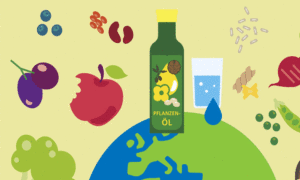
Article
Wondering where to get your protein from? There are more options than you’d think! Discover 17 high-protein plant foods to keep you fuelled.
Most people know that protein is essential for building and repairing tissues, supporting immune function, and keeping you feeling fuller for longer – but this next fact might come as a pleasant surprise:
Because just about every plant food contains some amount of protein, it’s actually pretty easy to get enough protein on a plant-based diet.
Provided you eat a well-rounded diet with plenty of whole foods on your plate, you’re pretty much guaranteed to meet your daily requirements, without needing to obsess over every gram. Mother nature has set us all up for success!
That said, some plant foods contain more protein than others, and it can be helpful to know which ones are the heaviest hitters so you can plan your food routine accordingly.
From everyday staples to exciting new finds, I’ve compiled a list of the top sources of plant protein to help get you acquainted – and hopefully spark some meal ideas along the way.
Keep reading or click through to explore these protein-packed plant foods:
Important note: These foods are listed in decreasing order of protein content per serve, not the order in which they should be prioritised in a balanced plant-based diet.
According to health and nutrition experts, legumes, grains, nuts, seeds, and soy products like tofu and tempeh are the most important and nutritious sources of plant protein – and eating meals rich in colourful fresh fruit and veg is the ‘gold standard’ when it comes to nourishing our bodies.
12 – 30g protein per serve Serving size: 100g uncooked
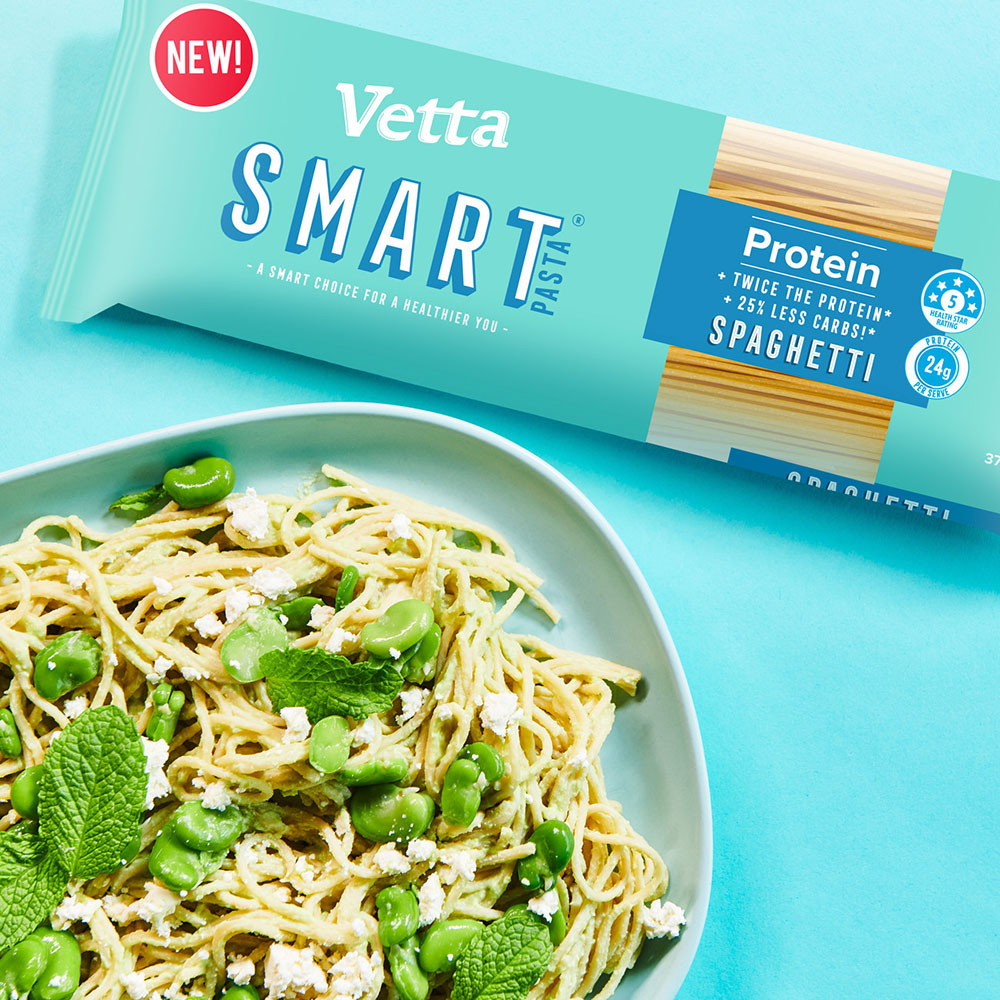
Sure, pasta is a notoriously carb-rich (and delicious 🤤) meal base, but as a grain-derived food, it also contains a decent amount of protein.
The regular packets of penne and spaghetti favoured by most of us already contain around 12-13g of protein per serve … and there are other options out there that are even more abundant.
Wholemeal pasta, for example, contains around 15g of protein per serve, whereas pulse pasta contains around 21g – so both are great options for a bit of a boost, not just of protein but also fibre and essential vitamins.
But if you want to drastically amp up the protein content of your pasta-based comfort meals, try cooking with a specialty ‘protein’ pasta. Depending on the brand, these products can boast anywhere between 24 and 30g of protein per serve.
Pair your pasta base with a nutty pesto or lentil meatballs for extra nutrients and, you guessed it, more protein.
25g protein per serve Serving size: 50g / ½ cup in dehydrated form
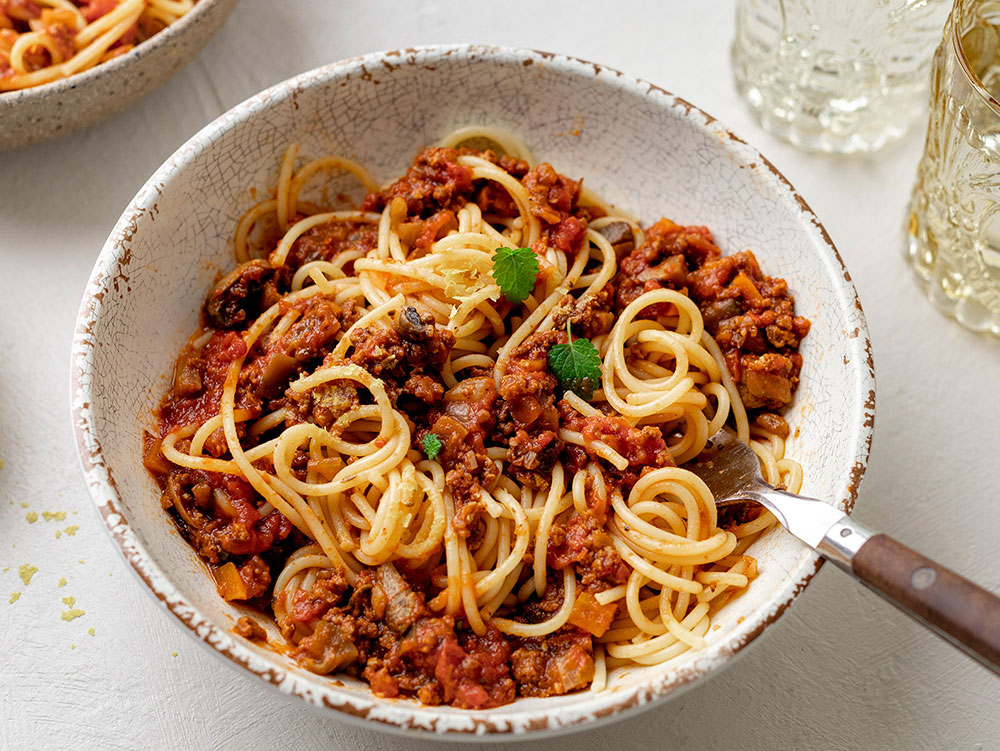
Weighing in at around 50% protein, while also containing plenty of iron and zero fat, soy-based Textured Vegetable Protein (TVP) is one of the heaviest – and healthiest – hitters in the plant-based protein realm.
Its lightweight little nuggets may not look like much when you pour them straight out of the packet, but something truly miraculous happens when you rehydrate TVP in hot water or vegan-friendly stock.
Once it’s been soaked back to life and seasoned (I always recommend adding a dash of soy sauce and a drop of liquid smoke to the pan when frying it up, to add ‘meaty’ flavour and richness), TVP becomes a ridiculously convincing substitute for beef mince!
My personal favourite TVP recipe is this ‘meaty’ bolognese, but TVP can be used in literally any recipe that calls for animal-based or vegan mince, such as tacos, chilli con carne, meatballs, and shepherd’s pie.
You can find TVP at your local supermarket, health stores, and online.
20 – 25g protein per serve Serving size: 100g
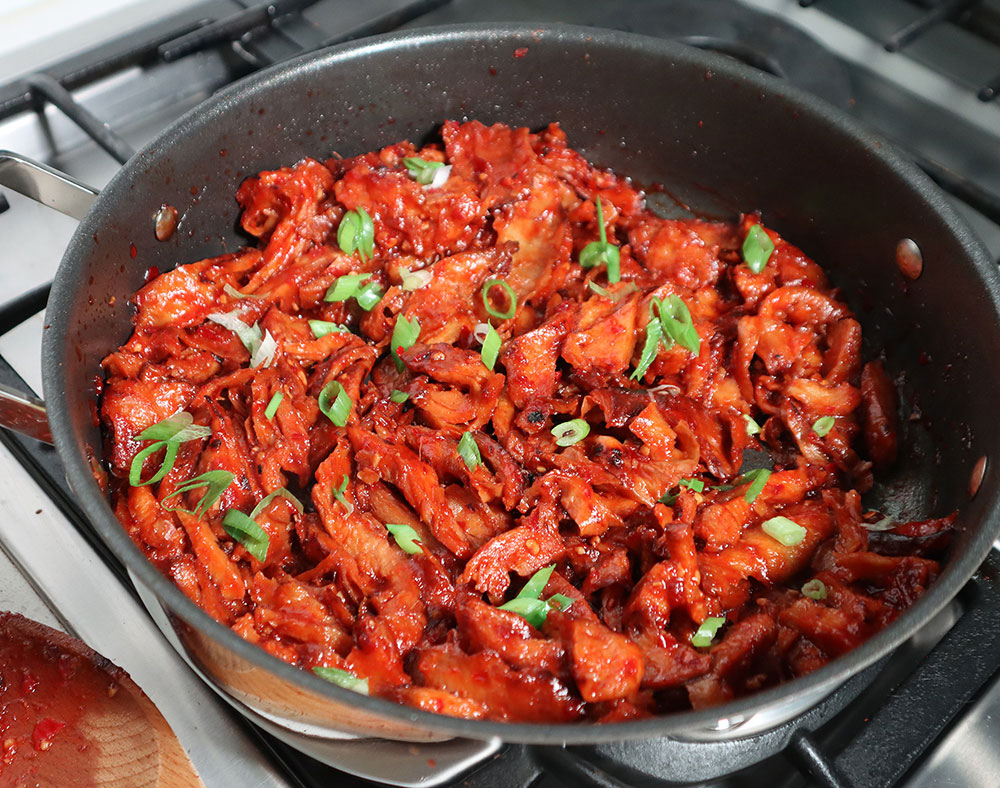
At first glance, seitan looks like it might really be meat, but this plant-based alternative is actually made using vital wheat gluten, a kind of supercharged wheat flour that has an extremely high protein content.
And seitan doesn’t just look the part – it slices, sears, and satisfies just like its animal meat counterparts, too, with a firm yet chewy bite that makes it perfect for adding to classically meaty dishes like stews, roast dinners, kebabs, and loaded sandwiches.
Although you can’t find many seitan products at the supermarket (yet), thankfully they’re easy to order from vegan grocery stores online, particularly from specialty retailers like Mina Maria (formerly I Should Be Souvlaki). They’re often stocked by health stores, too.
You can even make your own protein-packed seitan at home – check out this seitan salami recipe and try not to drool.
10 – 25g protein per serve Serving size: 80 – 90g / 2 slices
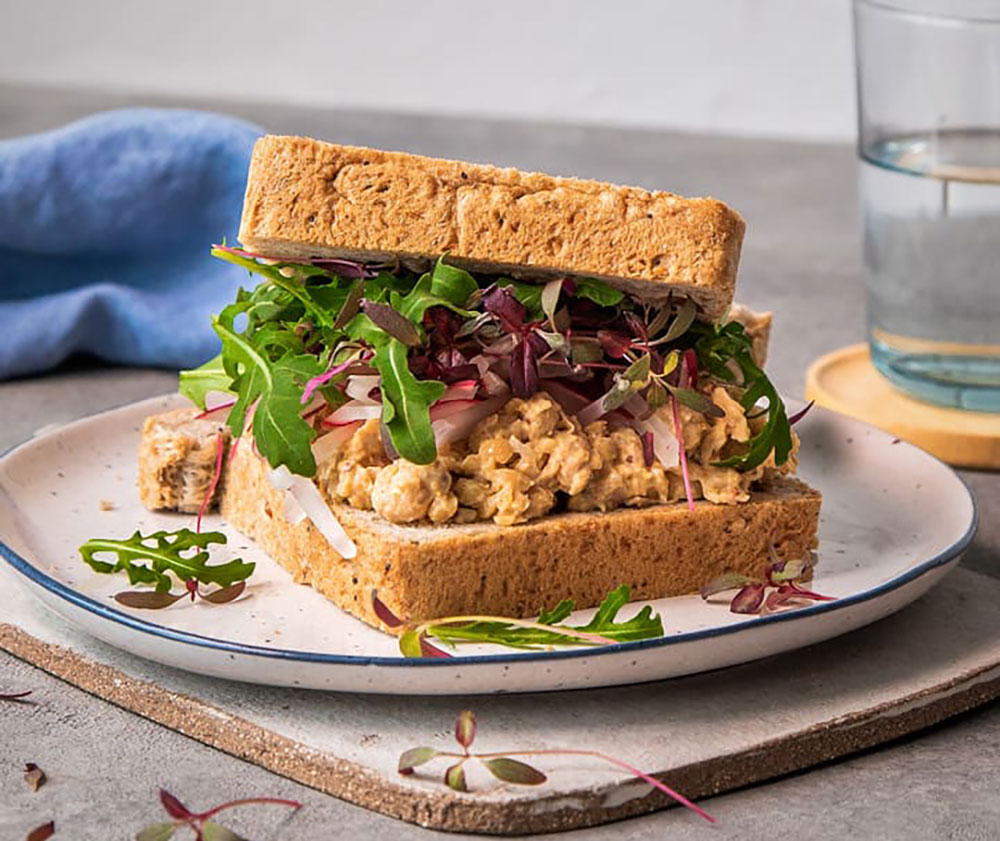
There’s so much more to a good loaf of bread or a bagel than ‘just’ carbs. These days you can find a whole range of wholesome high-protein varieties – some of which provide a weighty 25g of protein in just a couple of slices.
Most of them also come loaded with whole grains, seeds, and other nutrient dense ingredients, making them a brilliant choice for balanced breakfasts and satiating sandwiches alike.
Pick a topping or sandwich filling that also contains some protein, like chickpea ‘tuna’, cashew cream cheese, or marinated tofu, and you’re well on your way to smashing your protein goals – not just avocados – on toast 😉
18 – 25g protein per serve Serving size: 30g / ¼ cup

Unless you’re a plant-powered athlete in training, or otherwise actively trying to build muscle, chances are you won’t really need to supplement your meals with protein powder. After all, it’s easy enough to get all the protein you need simply by eating a variety of nutritious plant-based foods (including some of the staples on this list, like tofu, tempeh, legumes, grains, nuts, and seeds).
But it’s definitely worth remembering plant-based protein powders as an option for adding to your smoothies, porridge, protein balls, and baked goods, just in case you ever do need to give your protein intake a swift and hefty boost!
Unlike whey-based protein powders, vegan-friendly protein powders are 100% dairy-free, and are most commonly derived from soy, pea, faba bean, or hemp protein.
There are so many options available these days that you can take your pick of flavours: Chocolate, choc peanut butter, vanilla, salted caramel, and strawberry, just to name a few. (If you need a neutral-tasting protein powder to fly under the radar in a particular recipe, faba bean protein is the way to go.)
With plant-based protein powder containing between 18 and 25g of protein per serve depending on the brand, you’ll be hitting your protein and fitness goals in no time! 💪
12 – 22g protein per serve Serving size: 100g
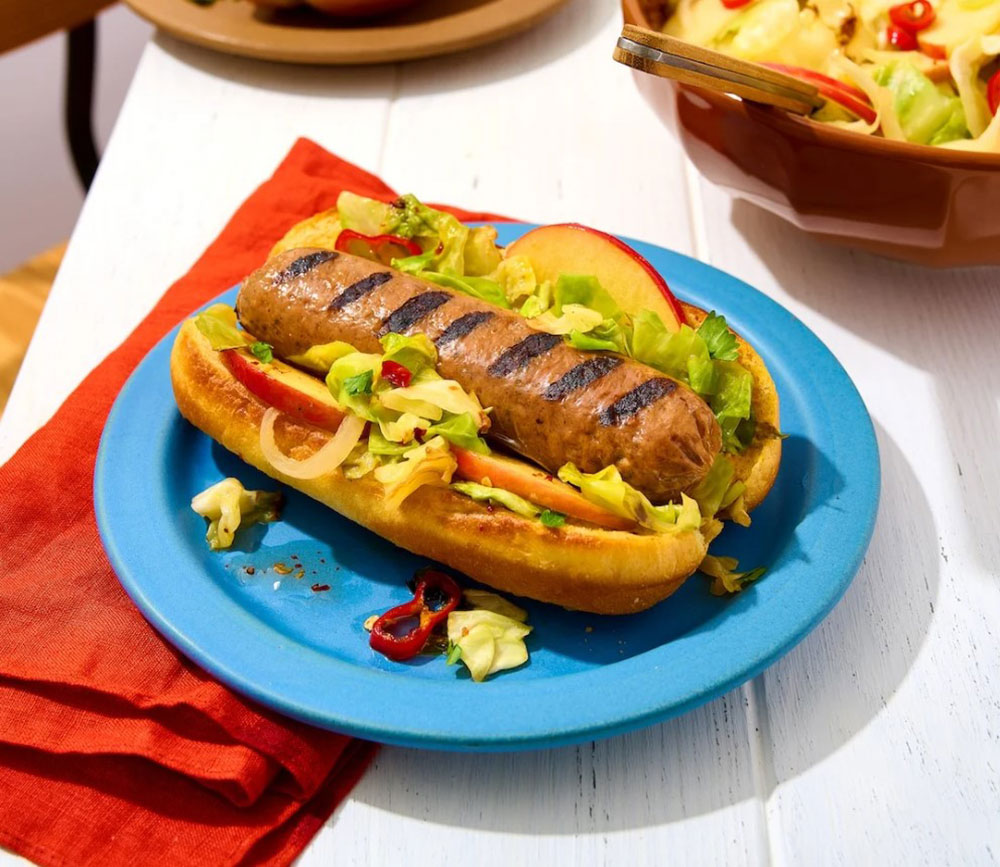
Considering how tasty, convenient, and protein-packed plant-based meat products are these days, it’s no wonder they’ve become so popular among us meat-reducing Aussies.
A comprehensive analysis of the plant-based meat products available in Australia and New Zealand today has found that 82% of these products meet the FSANZ requirements to be a “good source” of protein – containing at least 10g per serve – with some over-achievers containing up to a whopping 22g of protein per serve.
Major studies have also found that vegan meats have a healthier nutritional profile than animal meats, and are significantly better for your heart. So you can feel extra nourished and satisfied the next time you sink your teeth into a plant-based burger!
Check out our recommendations for plant-based chicken, beef, pork, lamb, and seafood products to get an idea of all the delicious brands to look out for in stores.
Note: Protein content varies between products, so it’s a good idea to check the label if you’re looking for a particularly high-protein option.
10 – 20g protein per serve
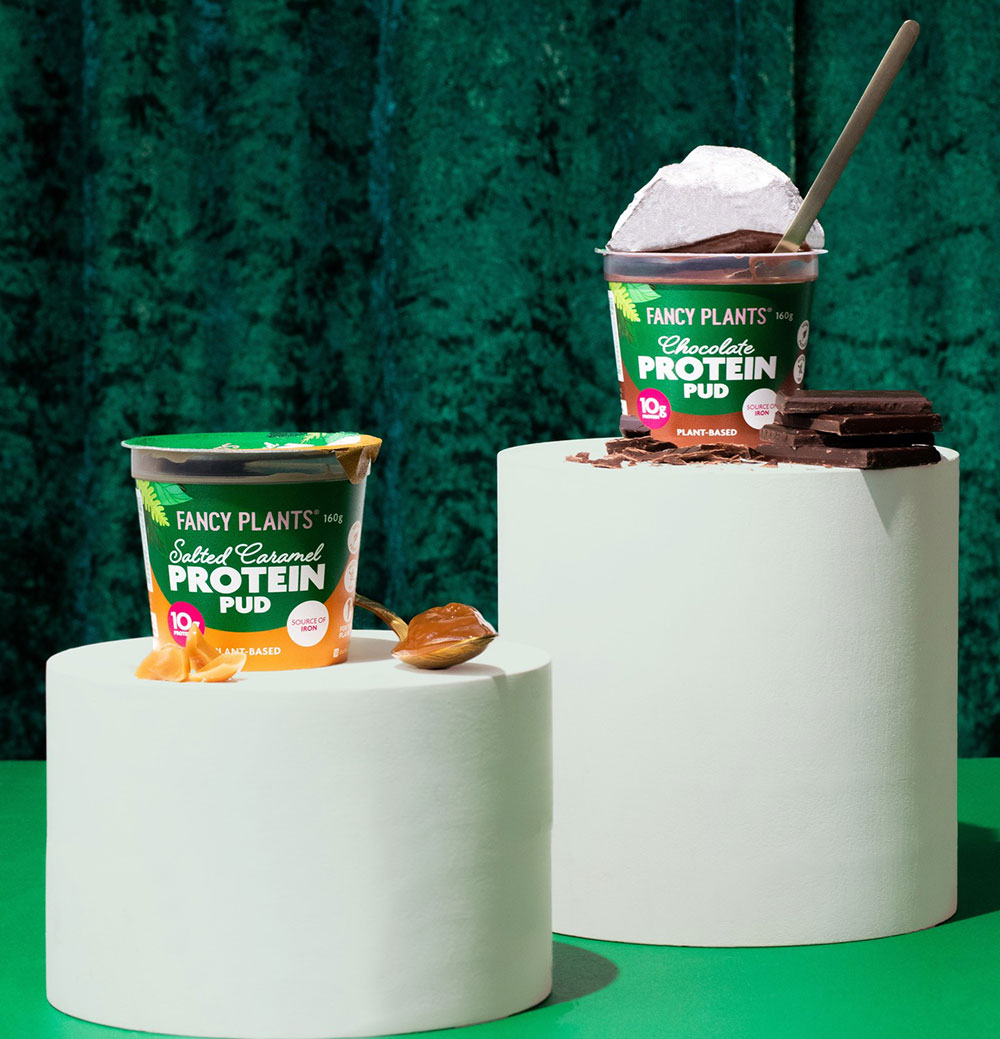
Hopefully it already goes without saying that snacks alone do not a meal make, regardless of how much protein is in them. You’ll feel much better if you nourish your body with some of the more wholefood-leaning plant-based protein sources on this list first, and supplement with these sorts of snacks only as needed.
With that out of the way… It’s still worth knowing that there are some wildly high-protein convenience snack foods available at the supermarket. These are some of my favourite discoveries that can help you pump up your protein in a pinch:
And in a delightful turn of fate, most of these are chocolate-flavoured! The only exception is the soy protein crisps, which aren’t so much a ‘snack’ as a protein-dense addition to scatter on top of other snacks.
Try sprinkling a handful of soy protein crisps on your protein pud, smoothie bowl, or vegan yoghurt for extra crunch – or, whip up the yum-looking (and indeed also chocolate-flavoured) vegan crackles recipe on the back of the packet.
19g protein per serve Serving size: 100g
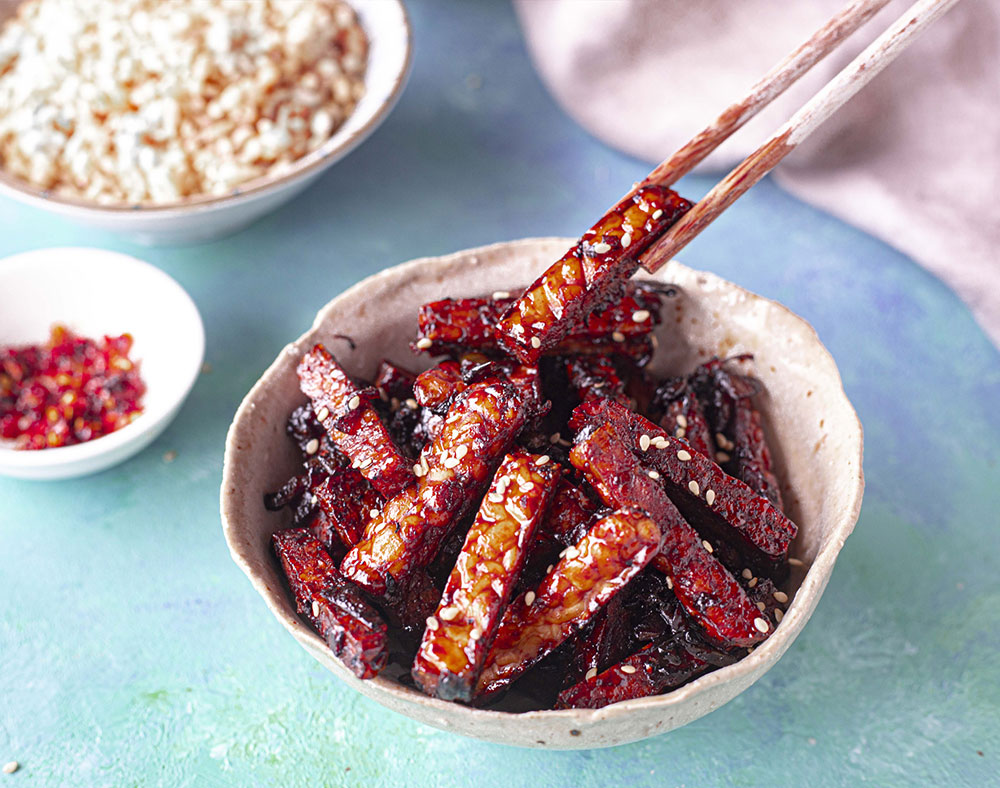
Not only is tempeh an amazing source of complete plant-based protein, it’s also rich in iron, calcium, and magnesium, as well as low in sodium.
A traditional staple in Indonesian cuisine, tempeh is primarily made from cooked and fermented soybeans; some varieties contain some extra ingredients like quinoa, brown rice, or flax seeds, which also happen to be rich in protein.
Despite not containing any nuts, tempeh naturally has a ‘nutty’ flavour that pairs beautifully with satay sauce, lemongrass, and other rich marinades, and diligently absorbs flavours just like tofu does. And because it’s made from the whole fermented soy bean (and not ‘processed’ much) it also tends to have a really nice chew, giving it a satisfying point of difference compared to the more smooth texture of tofu.
Some of my favourite ways to use tempeh include making vegan meatballs, bacon, and wholesome soul bowls – all loaded with protein and absolutely mouth-watering.
4 – 16.5g protein per serve Serving size: 100g
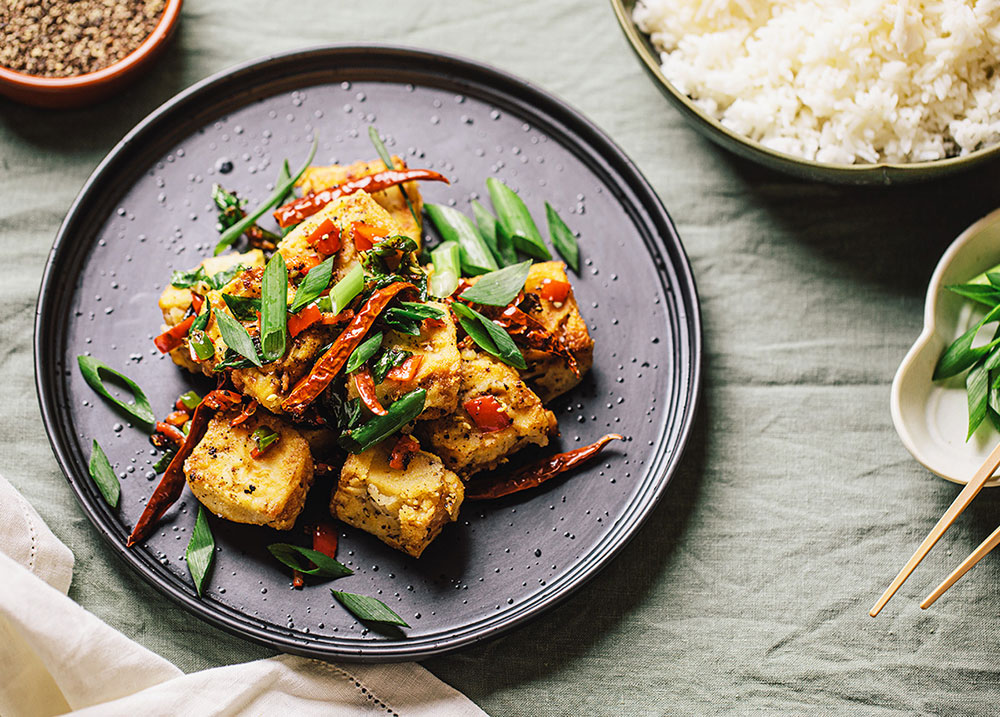
Tofu, particularly firm tofu, is a plant-based protein star. Made from soybeans, this humble block of goodness is packed with nutrients like iron and calcium, as well as all nine essential amino acids – making it a complete protein.
What makes tofu truly special, though, is its chameleon-like ability to soak up the flavours of whatever you’re cooking. Whether you’re marinating it, stir-frying it, baking it, or blending it into rich sauces and sweet treats, tofu can help you create protein-dense snacks, main meals, and desserts of all kinds.
Try this tofu breakfast scramble on for size to get your day off to a protein-y start – or pack this tofu-based ‘egg’ salad sandwich for lunch.
8 – 10g protein per serve Serving size: 250mL / 1 cup
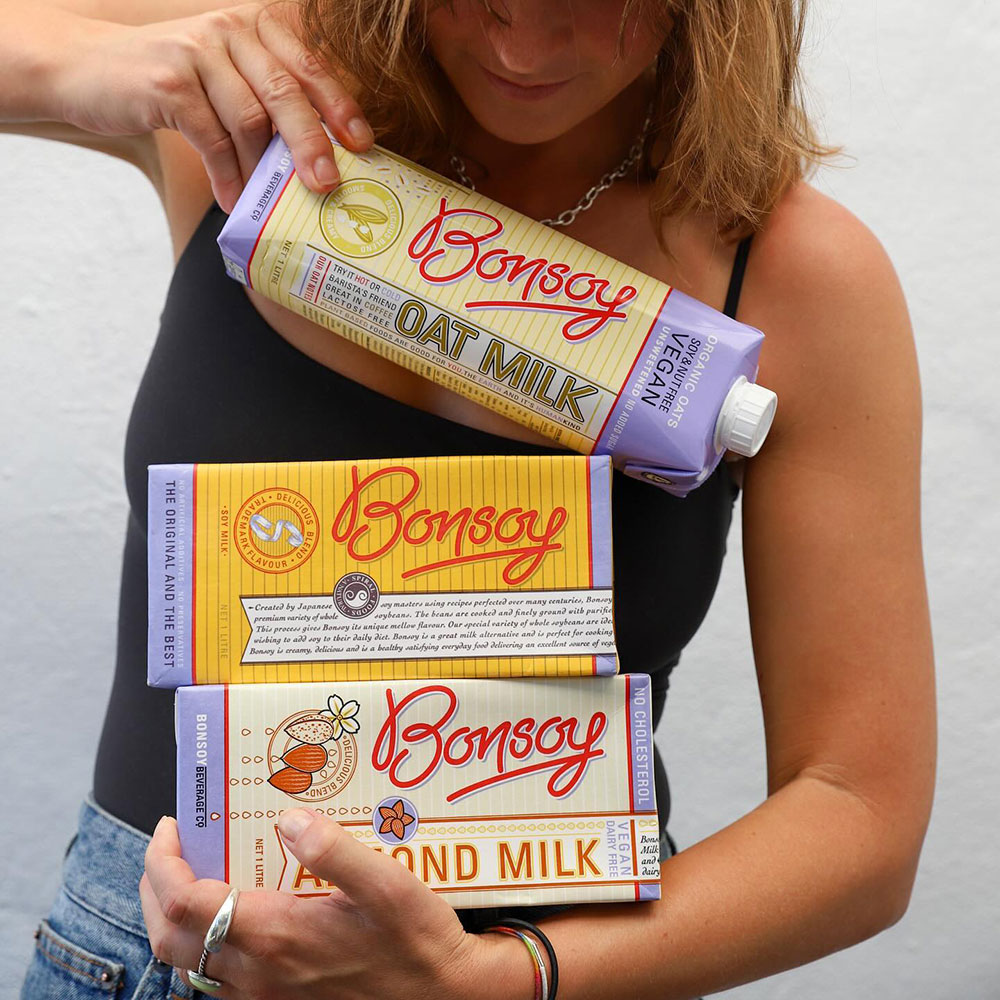
The plant-based milk section seems to go on forever these days, and with so many options readily available, you can bet there are some great high-protein options to choose from.
Soy milk generally contains the highest amount of protein (around 8–10g protein per cup), followed closely by pea milk – although pea milk can be a bit rarer to find at the supermarket, and is more reliably stocked at health stores.
Soy milk, on the other hand, is a highly popular option among non-dairy drinkers thanks to its pleasant creaminess and versatility, so you’ll always have plenty of cartons to pick from wherever you shop.
And if you prefer the nutty taste of almond milk, there’s a great option for you, too. Although almond milk isn’t typically very high in protein, So Good now offers a protein-enriched almond milk that boasts an impressive 10g per cup.
Keep an eye out for these brands in stores:
Switching to one of these protein-rich plant milks can be a real game-changer for your nutrition, especially if you’re reaching for them a few times a day – for your coffee, tea, smoothies, cereal, baked goods, soups, or sauces, for example. The extra grams of protein quickly add up!
5 – 9.5g protein per serve Serving size: 30g / ⅓ cup
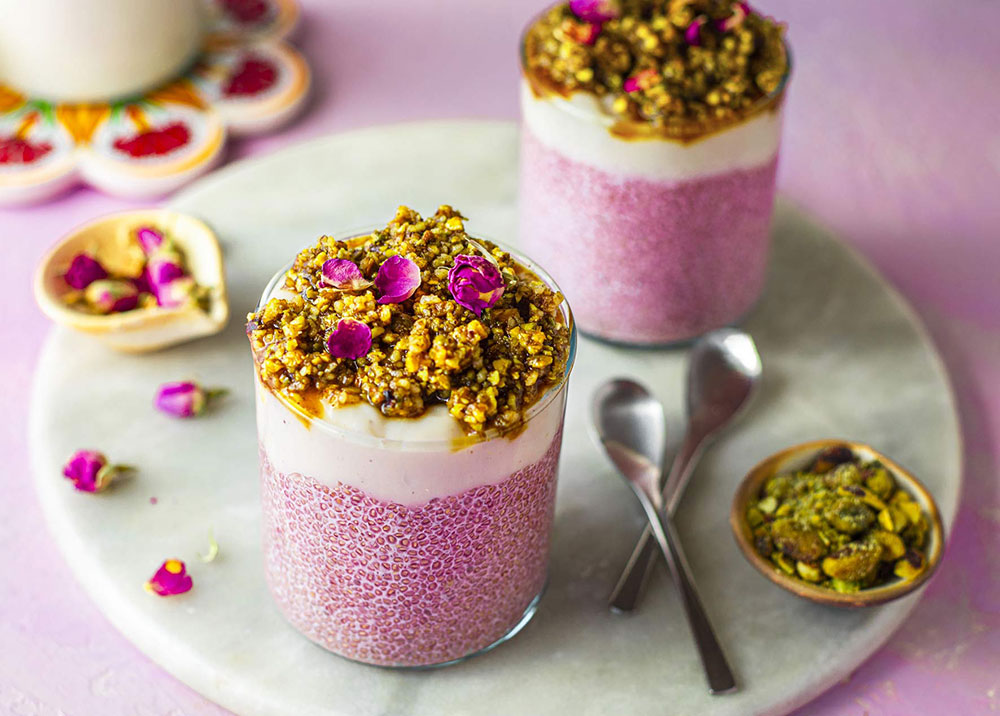
Despite their small size, seeds are surprisingly mighty when it comes to protein and other nutrient content – which makes a lot of sense when you consider the fact that each little seed contains all the starting materials needed to grow a complex plant!
So it’s not just protein that seeds are rich in: They’re also brilliant sources of dietary fibre and healthy fats, as well as a whole range of important minerals, vitamins, and antioxidants.
And because they’re tiny and relatively neutral-tasting, you can scatter these protein-packed bad boys on just about anything, sweet or savoury.
Try adding a handful of pumpkin and sunflower seeds to your salads or pasta dishes, some sesame seeds to your Asian-inspired stir-fry, or a tablespoon of chia seeds to your porridge in the morning for an instant nutrient boost.
4 – 8g protein per serve Serving size: 30g / ⅓ cup
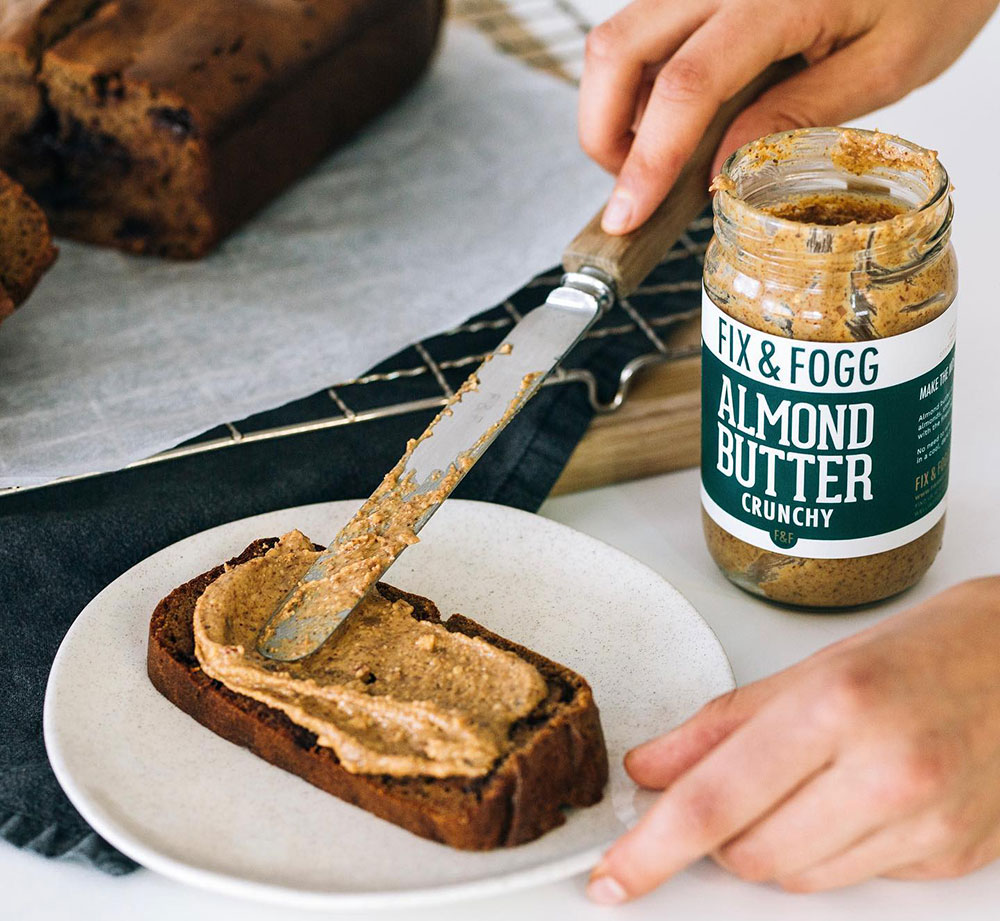
Nuts aren’t just satisfying snacks to munch on – they also pack a seriously wholesome punch. You can expect to absorb between 4–8g of protein per 30g handful, as well as plenty of fibre, essential vitamins, and heart-healthy fats.
And don’t forget about nut butters – they deliver all the same nutrition benefits of whole nuts, only in spreadable form! (The best nut butters are all-natural, so be sure to check the label to make sure they’re made from 100% nuts, with no added oils, salt, or sugar.)
For a quick protein hit, try adding a dollop of peanut butter to your breakfast smoothie, sprinkling chopped almonds over your oven-roasted veggies, blending cashews into sour cream or pasta sauce … or just eating a handful of chilli and maple nuts as a snack.
These tasty little powerhouses are so versatile that the possibilities are endless.
8g protein per serve Serving size: 15g / ¼ cup
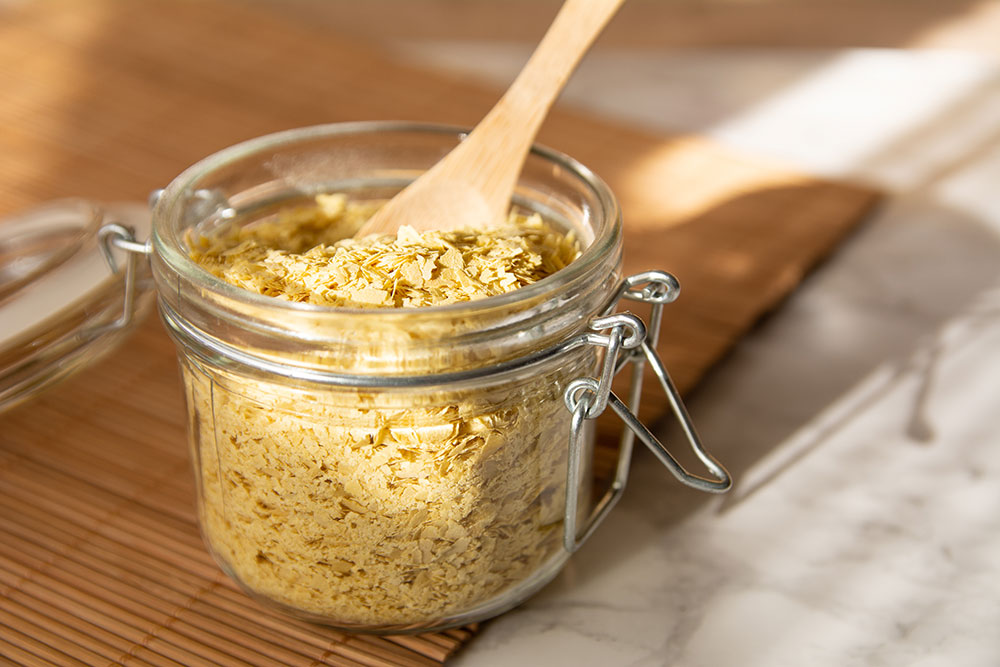
Nutritional yeast was one of my most exciting discoveries in the protein department – I nearly couldn’t believe it when I read that it contains a whopping 8g of protein per quarter-cup serve.
This came as particularly welcome news because I was already addicted to tipping those melt-in-your-mouth, nutty little flakes into just about everything, from pasta dishes to cheesy sauces, fresh bowls of popcorn, and even creamy soups.
Plus, nutritional yeast is often fortified with B12, so you can boost both nutrients at once with just a couple of tablespoons here and there. Two birds, one scone!
3.5 – 7g protein per serve Serving size: 75g / ½ cup canned
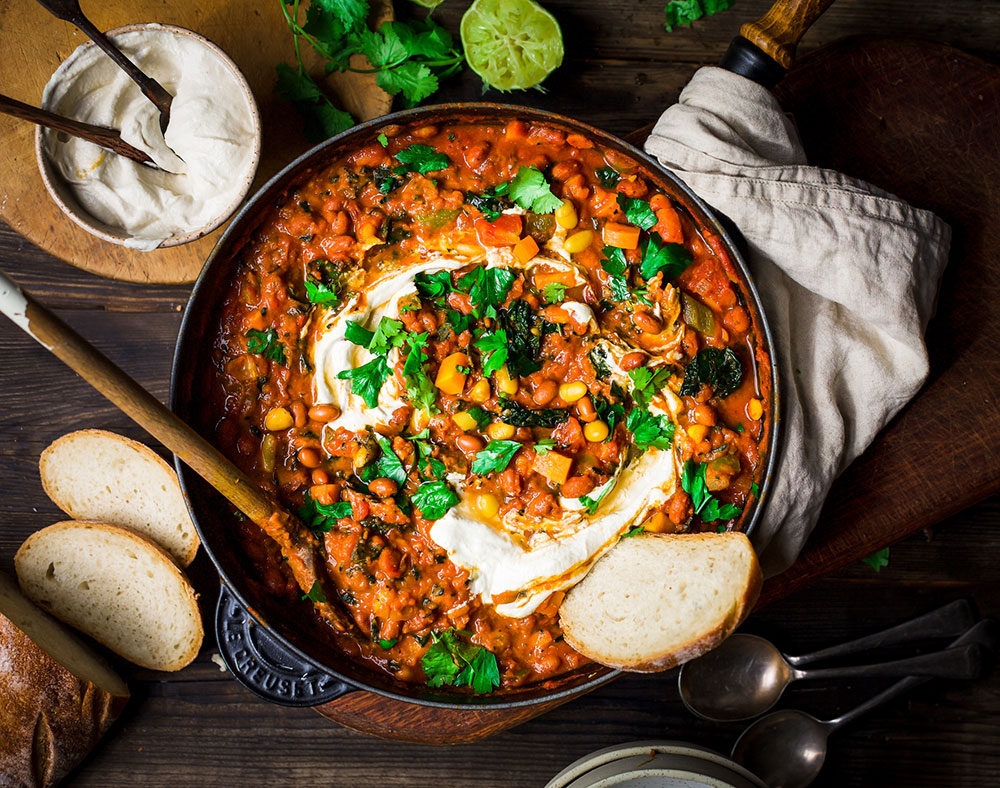
Legumes are a family of plants whose seeds (which include beans, peas, and lentils) grow in pods, and they’re a vital source of plant-based fibre, essential minerals, and protein.
They also happen to be super affordable. Throw a couple of cans in your basket every time you go to the shops – it’s a good rule of thumb to try and include lentils or beans as a protein source in at least one of your meals every day.
And there are countless delicious ways to incorporate them into your dishes. Legumes make a great base for hearty salads, burger patties, stews, veggie curries, tacos, and even dips.
You can even sneak beans into a variety of decadent desserts to get an extra (tasty) bit of protein in. Try this fudgy brownie recipe – you’d never guess it was hiding undercover black beans.
3 – 6g protein per serve Serving size: 100g / ½ cup cooked
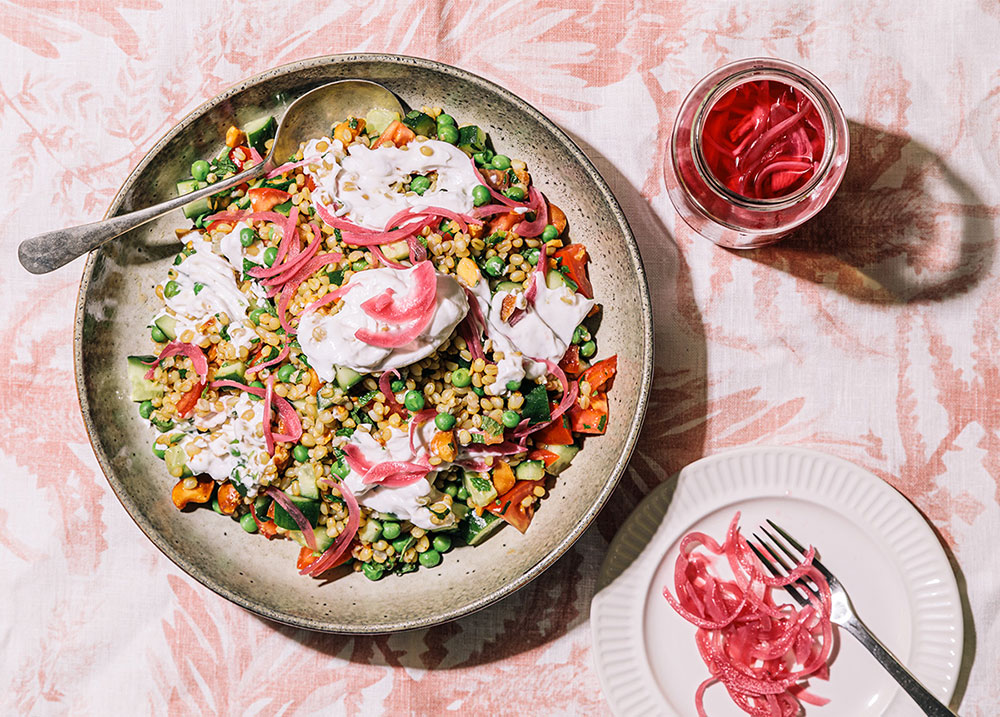
Grains aren’t just for carb-loading – they’re a solid source of plant-based protein, too. Some grains, like quinoa and buckwheat, even qualify as complete proteins, meaning they contain all nine essential amino acids.
For a high-protein breakfast, try making cinnamon-spiced overnight oats, cooking up a cosy bowl of quinoa porridge, or blending some oats into your smoothie. Need a filling lunch? Add farro or buckwheat to your salad for extra bulk and crunch.
And if you’re having curry or a stir-fry for dinner, adding a generous portion of brown rice or quinoa is a great way to up your protein intake even more.
1.7 – 3.9g protein per serve Serving size: 150g / 1 cup
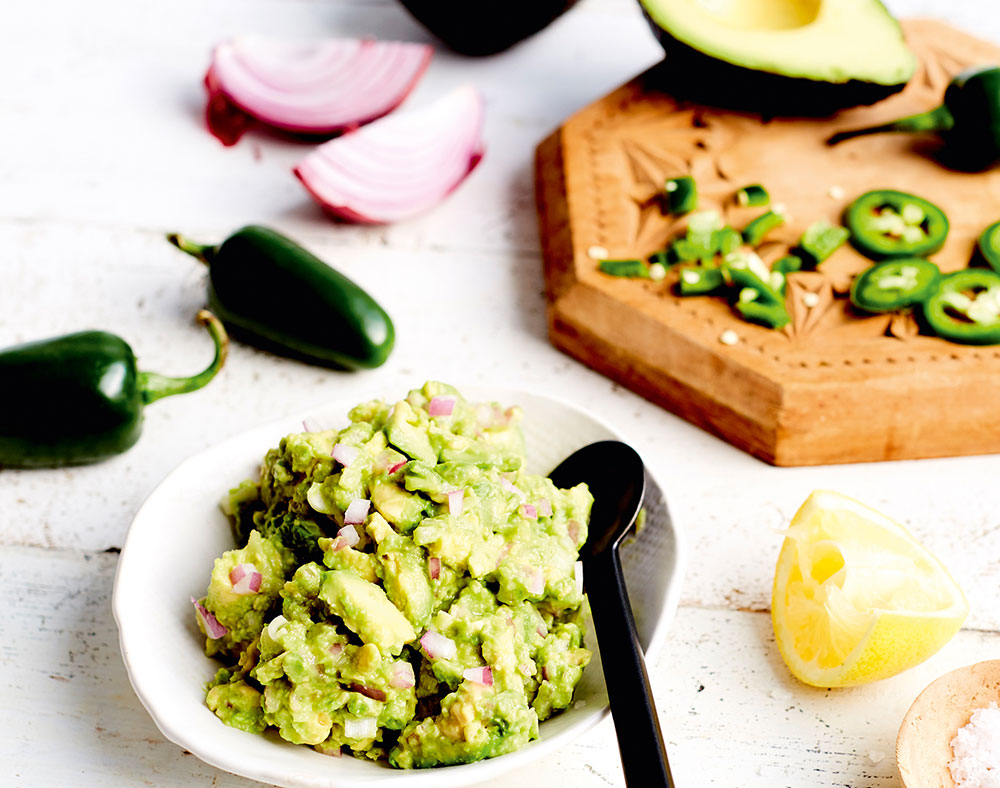
While fruit might not be the first thing that comes to mind when you think of protein, certain fruits do contribute a surprising amount of it – alongside all the usual vitamins and antioxidants, of course. So while fruit alone won’t hit your protein targets, it is an excellent addition to a well-rounded plant-based diet, and every bit adds up.
Guava, avocados, and jackfruit are some of the most protein-dense fruits out there, with around 3g of protein per cup, closely followed by blackberries and apricots, which contain around 2g per cup.
Who knew your avocado toast or those berries on top of your dessert were helping you out with little doses of extra protein all along?
1.4 – 2.6g protein per serve Serving size: 75g / ½ cup

If you thought vegetables were only useful for getting in a full spectrum of vitamins, antioxidants, and fibre, think again. Just about all vegetables (apart from celery, spring onions, and radishes, the poor buggers) contain protein, and some pack more than others.
Brussels sprouts, artichokes, and sweet corn, for example, offer around 2.5g of protein per serve, and broccoli and spinach are fairly rich in protein, too.
This makes veggies an easy, flavourful way to increase your overall protein levels, while also adding vibrant colours and variety to your plate. Steam, roast, or toss them into your soul bowls, soups, and salads to get a protein boost with every bite.
Hopefully this helps as a starter guide to the huge range of protein-rich plant foods we have at our fingertips these days – and to reassure you that plant protein really is everywhere! As long as you’ve got a solid variety of fresh and whole food ingredients in the mix, you really can’t go wrong. ![]()
Hungry for more? Check out these high-protein recipe ideas that are just as delicious as they are nutritious!

Having grown up in a “meat and 3 veg” kind of household, Liv’s embarrassed to admit that she was a bit of a one-note chef until she began exploring the world of plant-based food. Vegan cooking has given her a whole new appreciation for the symphonies of flavours that simple, nourishing wholefood ingredients can create. (Even eggplant, once her greatest nemesis, is now — in a delicious, miso-glazed redemption arc — her all-time favourite veg.)